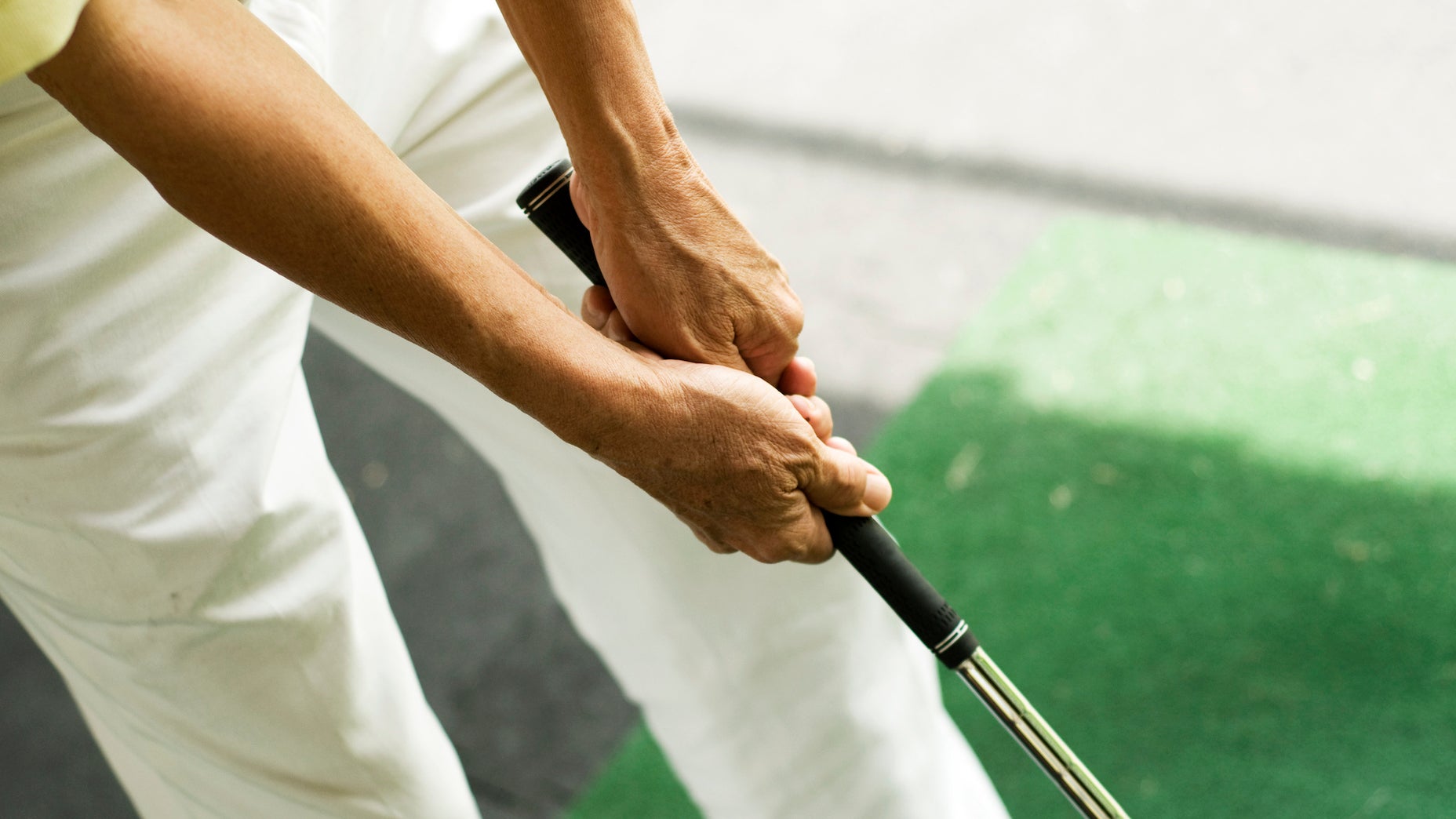
A Fully Equipped listener asks: I’m about to regrip my entire set of golf clubs. What do I need to know before I do?
Getty Images
Ahh, yes. We get asked this a lot, and it never hurts to get a little refresher on how different grips affect how you swing the club. Before we dive in, let’s be clear about one thing—There’s a definitive right and wrong answer relative to grip textures, sizes and styles. The wrong is a to play with worn-out, misshapen or slippery grips. We know some of you have grips way past their prime (we’ve even seen some worn out grips in the bags of very own Golf.com staffers) and there’s really no excuse for playing a grip that will compromise how well you’re able to hold onto the club during the swing. Really, if this is you and you’re still reluctant to remove that “lucky grip” on your wedge that’s been there since college—please stop. Now’s the time.
As for the right way to be about it, it’s also simple: start with whatever feels right in your hands and looks good to you. The common misconception is that skinnier grips are only for golfers with smaller hands and/or thinner fingers, and bigger/fatter grips are for players with bigger hands. And while that’s generally true, it’s not always the case for everyone. There are exceptions to every rule. Within reason of course.
Speaking of rules, the USGA really isn’t that much of a stickler when it comes to grips other than they have to be adhered to the shaft and plain in shape/straight. There’s no rule to how much the grip ought to taper from top to bottom, and generally most golfers prefer the feel of a tapered grip since it establishes a firmer hold on the upper hand (which is the dominate hand in the swing) and a supporting grip on the lower hand. Some golfers also like what are called reminder grips, which have a slightly raised rib down the full length of the shaft, which when used under, to the side or even on top of the grip can you remember where the hands ought to hold the handle.
Other than that, almost anything goes. Be it leather (you can still find them online), rubber or polymer in velvet, wrap, corded, etc.—there’s ample variety out there to choose from. Some models are even made of mixed materials and different densities for soft/firm combinations—let’s just say if you look hard enough you’ll eventually find something you like.
But that’s only the beginning. Looks and feel certainly matter, but so does grip diameter, weight and firmness. As alluded to, grip diameter isn’t just relative to the type of hands you have. It also has a lot to do with your shot tendencies and what you want to do and/or avoid. If you’re a player who slices, having thicker grips can lessen your ability to rotate the club through the hit leaving the face open at impact. A thinner diameter can help add more hand action to your swing. On the other hand, the reverse works for those who hook. Having a thicker grip can mitigate overactive hands through the hit.
Next, the weight of your grips can change the way your whole club feels. Lighter grips will make the head feel heavier (increasing swingweight) whereas heavier grips will do the opposite making the head feel lighter. And, the firmness of your grip ought not be overlooked. You may find a grip that looks the part and feels the good in terms of tackiness, but if it’s too soft it might make you squeeze harder with the fingers and tense up your hand. The same can be said of a grip that’s too firm—your fingers and hands won’t feel as relaxed as they would with a grip that’s comfortable. Typically, rubber grips with corded textures are the firmest, and multilayer polymer grips provide the most cushion.
Which by the way, in a previous edition of the Fully Equipped mailbag, we covered Bubba Watson’s penchant for grip tape and although we didn’t settle the debate between thicker grips vs more tape, we explained it in detail to help you decide. If you want the summary, just know that more grip tape can not only thicken a grip, it also makes it more firm. More tape adds weight too, which can lessen your swingweight and make the clubhead feel lighter.
Hate to follow up last week’s mailbag with another “It’s up to you to decide what works best” smidge of advice, but that’s the right way to be when it comes to grips. We do recommend, despite some folks who use grips of different diameters in different clubs (it’s not uncommon to see players with thinner wedge grips for more feel), you eschew that strategy and stick with consistent grips from driver through wedge. We think it’s best to keep your grips consistent and the same with every club, since fewer equipment variables is always better come time to play your best.








